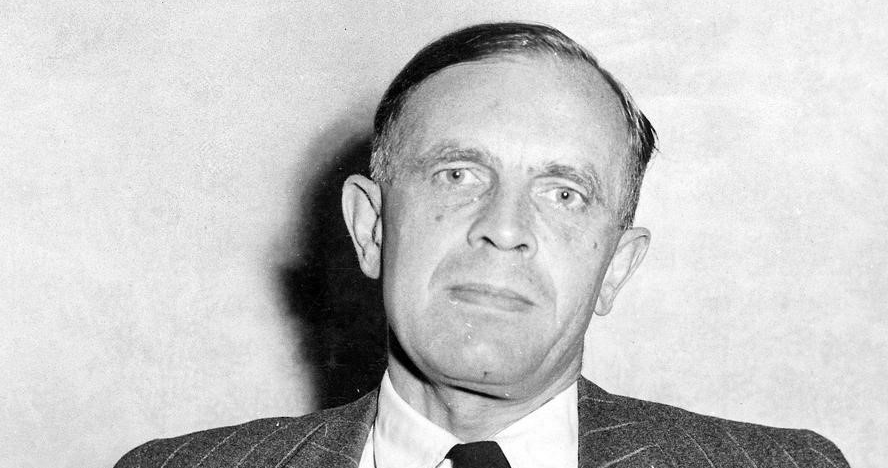Market-friendly economists, historians, and philosophers will need new approaches in an age unfriendly to economic freedom.
Getting to the Roots of Monetary Order
With the recent resignation of the president of the German Bundesbank, Jens Weidmann, the European Central Bank’s governing council lost one of its few reliable anti-inflationary hawks. The departure of “Mr. Nein,” as he was known, occurred less than two years after his mandate at the Bundesbank had been extended for another eight-year term. But while careful in his public statements, Weidmann never hid his discontent with the ECB’s present uber-dovish approach to monetary policy.
Weidmann was reflecting the Bundesbank’s traditional hostility to loose monetary policy, its abhorrence of casual attitudes to inflation, and its belief that there is no point having monetary rules unless you adhere to them, in good times and bad. These positions are rooted in more than simply technical arguments about the efficacy of the ECB’s present policies, or even Germany’s long memories of 1920s hyperinflation. At a deeper level, it reflects a commitment to the moral and legal integrity of monetary order—something that is an intellectual legacy of German and European ordoliberalism.
One ordoliberal who wrote extensively about these matters was perhaps the most famous of such thinkers. To English-speaking audiences, Wilhelm Röpke is known for his critical role in the liberalization of West Germany’s economy in 1948 as well as for his arguments about the need for market economies to be grounded in particular moral-cultural settings, as set out in books such as The Social Crisis of our Time and A Humane Economy.
At different points of his career, however, Röpke devoted considerable attention to monetary policy. It features in his work on business-cycle theory in the 1920s and 1930s, most notably his Cycles and Crises, as well as his contributions to international trade theory, like International Economic Disintegration and International Order and Economic Integration, before and after World War II. In all these writings, Röpke emerges as a firm advocate of the classic gold standard. Yet his case for gold rested on more than economic arguments. For Röpke, the efficacy of the classic gold standard reflected and depended upon specific legal and moral claims that had developed over time in the civilization of the West.
Thinking in Orders
One of ordoliberalism’s distinct features is an emphasis upon “thinking in orders.” This involves identifying the legal, cultural, and ethical foundations of different economic institutions such as private property or contract law. But it also means paying attention to the interdependence of different orders: i.e., the idea that while specific spheres of human activity (economic enterprises, the legal system, etc.) have their own logic, they cannot fulfill their goals without support from other orders. The sustaining of market exchanges over long periods of time, for instance, depends upon rule of law. Rule of law, however, requires a commitment to certain philosophical conceptions of liberty and equality. These in their turn reflect particular understandings of human nature and reason.
Ordoliberals didn’t always agree about the precise nature of these interdependencies. But they did agree that, at some point, you could not discuss something like monetary policy or competition as if they were stand-alone phenomena. For that would be to truncate the reality of these things. Not only would this encourage economists to succumb to the temptation of disciplinary introversion. It would also heighten the risk of policy-makers coming to seriously mistaken conclusions about the proper settings of economic policy.
Röpke’s The Social Crisis of Our Time was the first book to bring attention to this ordoliberal outlook and method to audiences outside the German-speaking world. The disorder into which he believed the international economy had started to fall in the decades leading up to World War I was inseparable, Röpke maintained, from political developments in Europe as well as wrong turns taken in political and legal philosophy throughout the nineteenth century. In later works, Röpke expanded on that thesis as he reflected on how to reestablish an international economy capable of resisting tendencies to economic nationalism. This was the context in which Röpke focused upon explaining what international monetary order should look like, and identifying its prerequisite moral and legal foundations.
L’ordre public international
Röpke was no fan of supranational institutions. He was deeply critical of the form taken by the European integration project that eventually gave rise to today’s European Union. Röpke predicted that it would saddle Europe with unaccountable self-perpetuating bureaucracies that would try to manage everything from the top-down.
Nevertheless, Röpke had also witnessed how radical nationalism in Europe had contributed to what he called “the catastrophe of 1914” as well as the cataclysm of World War II. Though he viewed national sovereignty as an essential element of international order, Röpke believed in the necessity of links that smoothed economic relations between sovereign-states, while avoiding anything like subordination to top-down global governance schemes.
Different approaches to monetary policy do not emerge from philosophical, legal, or historical voids, and different options for monetary order do involve making specific normative choices.
By Röpke’s own admission, realizing his vision of international order is a difficult balancing act. He pointed, however, to the classic gold standard as an example of what he had in mind. The gold standard’s emergence in the second half of the nineteenth century as a universal basis for monetary stability and a global payment community was not planned, Röpke noted. Nor was it directed by an international institution seeking to construct a global economy. Instead, Röpke maintained, the classic gold standard’s workings were premised upon internationally-recognized norms, rules, and laws that had been in the process of formation since the Middle Ages.
Röpke described the first expression of this framework as the res publica Christiana whose roots went back as far as the thought of Aquinas. Its development, Röpke argued, was accompanied by a growing acceptance of legal standards and moral codes governing international economic exchange: the lex mercatoria which was embedded in the practices and customs of medieval and early-modern bankers and merchants.
These international legal frameworks, Röpke added, acquired further precision, thanks to the work of Catholic and Protestant natural law thinkers such as Francisco Suárez, Luis de Molina, Francisco de Vitoria, Hugo Grotius, Samuel Pufendorf, and Emer de Vattel. According to Röpke, the resulting set of norms and rules formed a substantive portion of the law of nations (ius gentium) which had acquired full maturity in the European world by the 1750s and was understood as binding the behavior of all nations. In the nineteenth century, it was known as l’ordre public international.
Freely Embracing Rules
To Röpke’s mind, this was the crucial moral and legal backdrop to the classic gold standard. It was based, Röpke pointed out, upon the unwritten agreements of sovereign states “to behave in matters of monetary and credit policy in such a way that this fixed and free coupling remained an undisputed permanent institution, irrespective of trade fluctuations.”
In short, there were rules underlying the gold standard’s workings to which nations were expected to adhere. Governments not only had to establish and adhere to legal minimum ratios of gold to currency. They also committed themselves to freely settling international balance of payments differences via gold imports and exports. Countries in deficit would experience gold outflows, while nations with balance of payments surpluses would be recipients of gold inflows.
Röpke didn’t deny that governments and central banks had occasionally played fast and loose with the rules. His point, however, was that the rules of the gold standard, which generated remarkable price stability within and across borders between 1871 and 1914, were freely adhered to. Their force was not derived from the decrees of a world central bank claiming a quasi-sovereign status. Rather, the rules’ authority came from their association with a wider set of normative expectations, adherence to which formed part of what it meant to be a civilized nation.
To break the rules, willy-nilly, did more therefore than just undermine a government’s credit rating or capacity to raise loans in international capital markets. It was also to depart from long-standing norms and principles embodied in the l’ordre public international: specifically those concerning the moral responsibility of sovereign-states to honor any obligations which they freely assumed vis-à-vis other nations. The effect of violating these duties was to damage a country’s reputation for civilized and responsible behavior among the family of nations.
Money beyond Economics
All this is very different from the way that questions of monetary policy—let alone the nature and future of international monetary order—are discussed today. With a few notable exceptions, these are considered in a manner distant from the approach adopted by Röpke and like-minded individuals like Jacques Rueff, perhaps the world’s most formidable advocate of a return to something like the classic gold standard in the 1960s and 1970s. For all his technical expertise as a monetary theorist, Rueff emphasized the importance of exploring the often subterranean philosophical, political and legal background that, he believed, helped shape the character of monetary order in a given society and which economics cannot access by itself.
Alas, the odds that such analyses might undergo a significant revival in our time seem low. The technical dimensions of monetary theory and policy are obviously important. Fewer, however, appear willing to follow the path laid out by figures like Röpke and Rueff and “think in orders” about the extra-economic realities that, whether we realize it or not, set many of the parameters for how we think about monetary order, and which no amount of mathematical modelling is ever going to capture fully. Different approaches to monetary policy do not emerge from philosophical, legal, or historical voids, and different options for monetary order do involve making specific normative choices. Understanding these realities is surely, at some level, necessary if we are going to grasp fully the nature of our presently grave monetary challenges and the possibilities for overcoming them.



